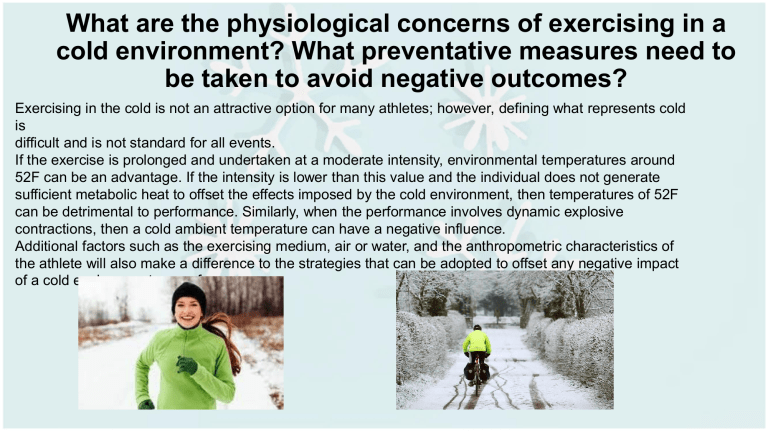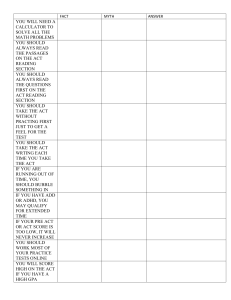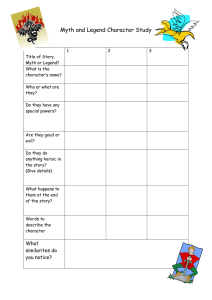
What are the physiological concerns of exercising in a cold environment? What preventative measures need to be taken to avoid negative outcomes? Exercising in the cold is not an attractive option for many athletes; however, defining what represents cold is difficult and is not standard for all events. If the exercise is prolonged and undertaken at a moderate intensity, environmental temperatures around 52F can be an advantage. If the intensity is lower than this value and the individual does not generate sufficient metabolic heat to offset the effects imposed by the cold environment, then temperatures of 52F can be detrimental to performance. Similarly, when the performance involves dynamic explosive contractions, then a cold ambient temperature can have a negative influence. Additional factors such as the exercising medium, air or water, and the anthropometric characteristics of the athlete will also make a difference to the strategies that can be adopted to offset any negative impact of a cold environment on performance. Sufficient protection prevents cooling. However, protection itself may cause unwanted, adverse effects. The problem is illustrated Statistics It is evident that there is a pronounced effect of cold on muscular function and performance. Cooling of muscle tissue reduces blood flow and slows down neural processes like transmission of nerve signals and synaptic function. In addition, viscosity of tissues increases, resulting in higher internal friction during motion. Isometric force output is reduced by 2% per °C of lowered muscle temperature. Dynamic force output is reduced by 2 to 4% per °C of lowered muscle temperature. In other words, cooling reduces the force output of muscles and has an even greater effect on dynamic contractions. Cooling of the core may also have a direct effect on the contractility of the heart muscle. Work capacity, as measured by maximal aerobic capacity, decreases by 5 to 6% per °C lowered core temperature. Thus, endurance may deteriorate rapidly as the practical consequence of the lowered maximal capacity and with an increased energy requirement of muscular work. Estimated gross effects on manual performance at different levels of hand/finger temperature. Phase Core temperat Physiological reactions Psychological ure (°C) reactions Normal 37 Normal body temperature Thermoneutral sensation 36 Vasoconstriction, cold hands and feet Discomfort 35 Intense shivering, reduced work capacity Impaired judgement, Phase Core te Physiological Psychological mperatu reactions reactions disorientation, apathy re (°C) 34 Fatigue Conscious Normal 37 Normal body Thermoneutr temperature al sensation 36 Vasoconstricti Discomfort and responsive on, cold 33 Fumbling and stumbling Mild hypothermia Moderate hypother 32 mia Human responses to cooling: Indicative reactions to different levels of hypothermia hands and feet Mild 35 hypothermi Intense shivering, Impaired judgement, Muscle rigidity a reduced work disorientatio Progressive unconsciou capacity n, apathy sness, hallucinations 34 Fatigue Conscious Faint breathing ve Consciousness clouds 33 Fumbling and and responsi 31 30 29 Severe hypothermia 28 27 25 Stuporous Moderate h 32 No nerve reflexes, heart rate slow and almost unnoticeable ypothermia 31 Death due to ventricular fibrillation or asystole Muscle rigidity Progressive unconsciousn ess, hallucina tions Faint breathing Consciousnes s clouds 30 Stuporous 29 No nerve reflexes, heart rate slow and almost unnoticeable Severe 28 hypothermi a Heart dysrhythmias (atrial and/or ventricular) 27 Pupils non reactive to light, deep tendon and superfici al reflexes abse nt 25 Death due to ventricular fibrillation or asystole Heart dysrhythmias (atrial and/or ventricular) Pupils non reactive to light, deep tendon and superficial reflexes absent stumbling Progressive cooling of the body results in a number of physio-logical and mental effects. Table indicates some typical responses associated with different levels of core temperature. Graphics Differentiate between cold AIR and cold WATER exposure – the key difference is that the heat LOSSES in water are so much greater than on land, that you’re far less likely to develop any kind of hypothermia (low body temperature) on land. In fact, water conducts heat about 25 times better than air. So, when water moves across your skin you will lose heat more quickly compared to air simply because of its physical properties. Perhaps the first, and maybe the most surprising fact about cold water physiology, is that your body has too much heat to become hypothermic within about 30 minutes, no matter how cold the water is! In other words, it is not possible to get so cold that you’re in danger unless you are in the water for more than about 30 minutes. From this graph, you can see that even at water temperatures of 0 degrees Celsius, 30 minutes falls within the marginal zone, not the lethal zone. Many would probably survive for close to an hour – this is demonstrated by shipwreck victims, who Linear regression of lower critical air and water temperatures versus mean skinfold thickness. Skinfold thickness reflects approximate range for a double thickness of skin. Swimming in the cold – a problem of breathing and muscle weakness It shows the BREATHING RATE in breaths per minute against time in a person who stands in a cold shower at 52F. So the rate of breathing goes up from about 16 breaths per minute to 75 breaths per minute, within the first 20 seconds. It then stays up at 40 breaths per minute for the next few minutes. It is not difficult to see how that would affect your ability to swim, because your stroke rate would have to change substantially to allow you just to breathe! Humans are adaptable organisms, and just like we make adaptations to things like marathon training, we also make adaptations to stressors such as coldwater immersion. The data show that exposures to cold water as short as three minutes in a 10 C shower will attenuate the cold-shock response by as much as 20-30%. In the graph, you can see the same data, but this time, we’ve added in a comparison with the breathing rate AFTER six 3minute-long exposures to the cold water. So you can see that only six exposures is enough to reduce the cold shock response by 20%. If you have even longer exposures, you can bring it down by 50%. That is obviously a significant reduction, and the implication is that swimming will be far easier if you are simply adapted to the cold. Performance in air The wind chill nomogram: interrelationships between ambient temperature and wind velocity, and perceptual sensations and rate of heat loss (kcal × m 72 × h 71 ) from the skin. Under conditions of bright sunshine, cooling is reduced by about 200 kcal × m 72 × h 71 . Expressions of relative comfort are based upon a lightly clad, inactive individual. To convert kcal × m 72 × h 71 to W × m 72 , multiply by 1.163. Connection to Exercise Physiology Voluntary physical activity can increase metabolic heat production more than shivering. Whereas maximal shivering can elevate Vo2 (whole-body oxygen uptake) to about 2 liter/min, exercise can increase Vo2 to 5 liter/min or even higher. However, the effect of exercise on thermal balance depends on a complex interaction among factors related to exercise intensity, environmental conditions, and mode of activity. While exercise increases metabolic heat production, it also facilitates heat loss from the body by increasing blood flow to the skin and active muscles. This flow enhances convective heat transfer from the central core to peripheral shell. Thus, while metabolic heat production increases progressively as exercise intensity increases, so too does heat loss due to increasing blood flow to muscle and skin. Also, limb movement increases convective heat loss from the body surface by disrupting the stationary boundary layer of air or water that develops at the skin surface in a still environment. During submaximal exercise in the cold, Vo2 can be higher than, or the same as in temperate conditions, depending on the exercise intensity. Figure schematically depicts the effect of cold exposure on Vo2 during exercise over a range of submaximal intensities. At low intensities, Vo2 is higher in cold than in temperate conditions, since metabolic heat production during lowintensity exercise is insufficient to maintain core and skin temperatures high enough to prevent the afferent stimulus for shivering. This obviously has profound implications on ability to swim. And for all those who watched in despair as the character played by Leonardo DiCaprio could not swim to safety in the movie Titanic, you now have a physiological explanation – he simply could not swim, because his skin and muscles were too cold to contract normally! (Far be it for us to suggest that Hollywood portrayed that accurately!). The principle remains, however – a good swimmer in warm water will be an average swimmer in the cold. And a weak swimmer in the warm…well, that’s a recipe for trouble. Epiphany celebration 9 Myths About Exercising in the Cold Myth 1: Running in the cold can weaken your immune system. “This is true,” says Weiss. “Running and exercising in cold weather is a double stressor for the body causing a greater increase in nor-epinephrine and cortisol. This translates into immune-depression and decreased ability to fight infection.” This doesn't mean you can't run at all, though. To help keep your immune system strong, he suggests decreasing the intensity and duration of your outdoor workouts in cold weather. Myth 2: Cold weather helps you lose weight. Weiss says that while shivering can help to burn extra calories, unless you spend all day sitting outside quivering (not recommended), it’s not true that winter weather helps to aid weight loss when compared to any other time of the year. Myth 3: Cold weather makes you depressed. “Not exactly true,” says Weiss. “Winter depression, aka ‘seasonal affective disorder’ (SAD), is not related to the cold, but to light.” Because in some places it gets darker earlier, many people aren’t exposed to enough sunlight during the winter which can lead to feelings of depression and sadness. Myth 4: You need more sleep in the winter. “This is not true,” says Weiss. “The pineal gland is responsible for the sleep cycle and based on light not temperature —in actuality the cold can keep you up longer. As daylight fades, the pineal gland produces more melatonin, which causes us to feel sleepy. In the morning, the gland is instructed to stop producing the hormone, which aids in waking up. We feel sleepier in the winter because there’s less daylight, hence more melatonin.” Myth 5: You shouldn’t exercise in the cold. “This really depends on how cold, but for the most part this myth is false,” says Weiss. “Almost everyone can exercise safely during cold weather unless suffering from asthma, cv disease or Raynaud’s phenomenon. If the temperature dips below zero degrees Fahrenheit (minus 17.8 Celsius) or the wind chill is extreme, consider taking a break or choosing an indoor exercise instead. If not, dress in layers and decrease the duration of the workout.” Myth 6: Cold weather makes you eat more. Weiss says this “myth” is actually true. “Caloric intake tends to increase as the weather turns colder,” he said. “Increased melatonin levels may be a cause of increased appetite. Furthermore, you tend to stay indoors more and that can also lead to greater food intake.” He explained that some researchers believe genetics and anthropology to be additional factors that can cause an increase in food intake during the winter. “We are genetically programmed to conserve calories in the winter which in turn will give us energy for the seasons when we need it more,” he said. Myth 7: Injury recovery takes longer in the winter. Weiss dubs this a total myth. “Unless you are living in the wild, the wintertime should have no effect on your healing,” he said. “I have helped professionals and Olympians heal in the summer and winter equally. What’s more important is seeing the macro view of your life and planning accordingly.” Myth 8: Drinking alcohol keeps you warm in cold weather. “True,” says Weiss. “Alcohol increases body temperature acutely and a quick shot will definitely warm the body.” However, he says that alcohol during exercise is bad idea because, among other reasons, while your extremities will become warmer temporarily, you will lose heat in your core where it’s most important. Myth 9: It’s OK to drink less water in the winter. “If your winter experiences a cold climate, it’s always good to go out of the way to hydrate for three reasons,” says Weiss. “One, in the dry, cold climate we need extra water to keep our mucous membranes moist as this helps ward off infection. Second, in the winter you may not feel, hot, parched and want to drink water because you feel cold. But rest assured, just because you are not in a hot, sweaty climate doesn’t mean you need less water (some actually say you need more). Finally, greater core and peripheral water level aids in the moisture of the skin and total blood volume. This also helps prevent chapping, cracking, opportunistic infection, and c-v function.” References 1. Exercise in the Cold: Part II // A physiological trip through cold water exposure https://sportsscientists.com/2008/01/exercise-in-thecold-part-ii/ 2. Physiology of Cold Exposure Andrew J. Young1 Michael N. Sawka and Kent B. Pandolf 3. PHYSIOLOGICAL RESPONSES TO THE THERMAL ENVIRONMENT W. Larry Kenney 4. https://www.theactivetimes.com/winter-workouts-9myths-about-exercising-cold 5. Exercise in cold - Mira Nimmo





